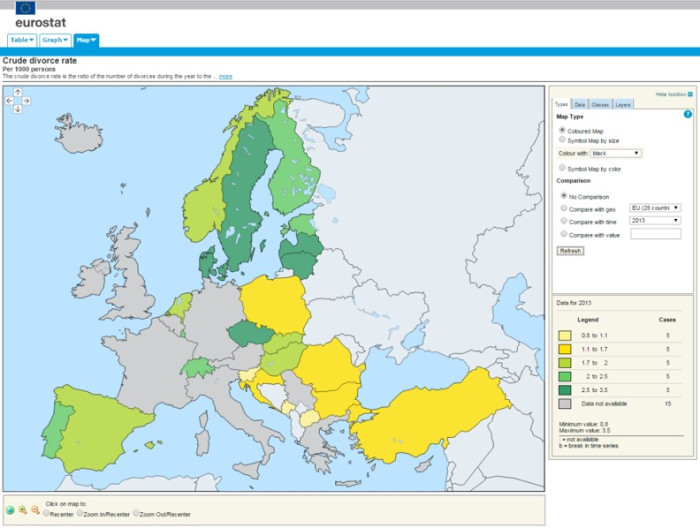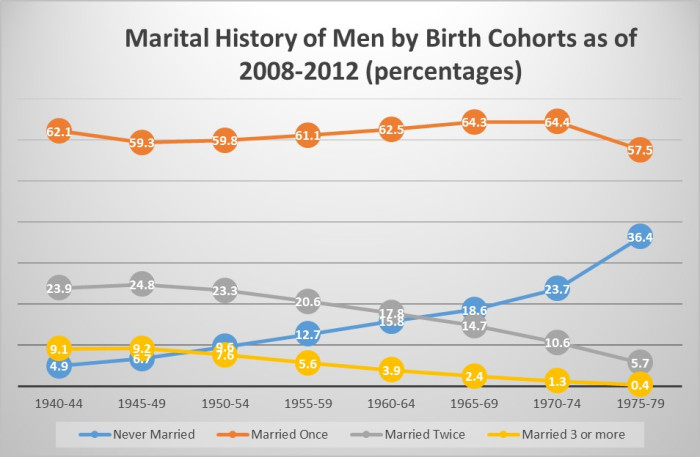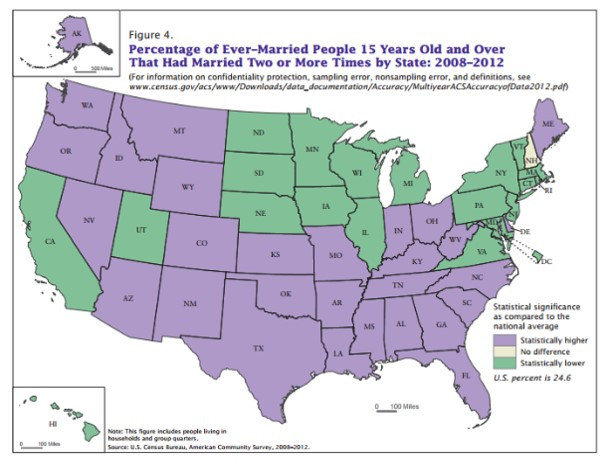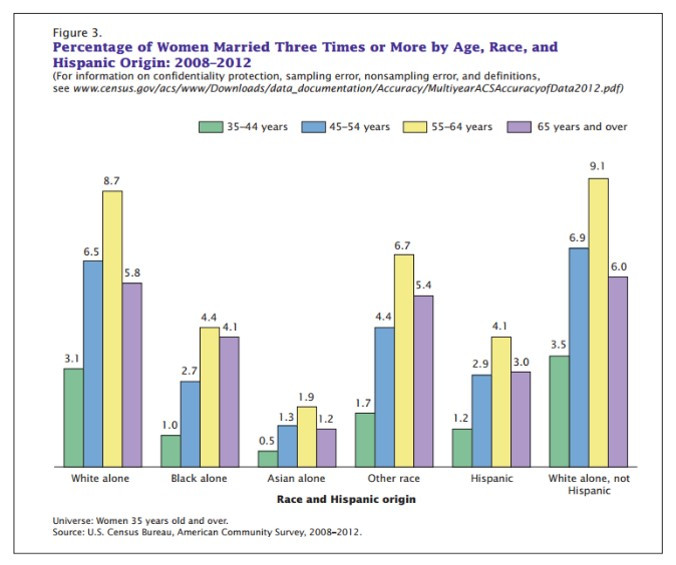The best source for the latest information about marriage and divorce trends in European countries is Eurostat….. included in their site is a tool for creating graphs of the information. See this example.

The best source for the latest information about marriage and divorce trends in European countries is Eurostat….. included in their site is a tool for creating graphs of the information. See this example.

This week there are 7 new articles dealing with parent-child relationships postdivorce, alienated children interventions, stepfamilies, and predictors of divorce. The work by Kalmijn exploring the variations in father-child relationships postdivorce is an important contribution to our understanding of the impact of divorce on parent-child relationships. Also, alienation continues to be challenging for some families experiencing severe conflict, the work by Reay provides new ideas for helping these families. See more 2015 articles and complete lists from 2010.
Parent-Child Relationships Post-Divorce
Davies, H. (2015). Shared Parenting or Shared Care? Learning from Children’s Experiences of a Post-Divorce Shared Care Arrangement. Children & Society, 29(1), 1-14. doi:
Kalmijn, M. (2015). How Childhood Circumstances Moderate the Long-Term Impact of Divorce on Father-Child Relationships. Journal of Marriage and Family, , n/a-n/a. doi:
Help for Alientated Children and Families
Reay, K. M. (2015). Family Reflections: A Promising Therapeutic Program Designed to Treat Severely Alienated Children and Their Family System. The American Journal of Family Therapy, 43(2), 197-207. doi:http://dx.doi.org/10.1080/01926187.2015.1007769
Stepfamilies
Ivanova, K. (2015). Relationship satisfaction of the previously married: The significance of relationship specific costs and rewards in first and repartnering unions. Journal of Social and Personal Relationships, doi:
Jensen, T. M., Shafer, K., & Holmes, E. K. (2015). Transitioning to stepfamily life: the influence of closeness with biological parents and stepparents on children’s stress. Child & Family Social Work, , n/a-n/a. doi:
Predictors of Divorce
Boertien, D., von Scheve, C., & Park, M. (2015). Can Personality Explain the Educational Gradient in Divorce? Evidence From a Nationally Representative Panel Survey. Journal of Family Issues, doi:
Torvik, F. A., Gustavson, K., Roysamb, E., & Tambs, K. (2015). Health, health behaviors, and health dissimilarities predict divorce: Results from the HUNT study. BMC Psychology, 3(13) doi:http://dx.doi.org/10.1186/s40359-015-0072-5
Help for Alientated Children and Families
Reay, K. M. (2015). Family Reflections: A Promising Therapeutic Program Designed to Treat Severely Alienated Children and Their Family System. The American Journal of Family Therapy, 43(2), 197-207. doi:http://dx.doi.org/10.1080/01926187.2015.1007769
Over time this figure shows the changes in marital history of men in different birth cohorts (a birth cohort is all the men born in a specific time period). The men born in the years 1940-44 were ages 77-82 when this report was created. The men born in the years 1975-79 were ages 32-37. Keep this in mind when looking at these data. The younger group (1975-79) is still likely to experience more changes in their marital history.
Nevertheless, you can still see some trends. On average, about 2/3 of men are married at least once and this has remained constant over much of this period except this most recent period (those born 1975-79 who still have a chance of marriage). A more difficult trend to determine in whether 2nd and 3rd time marriages are declining– the cohorts between 1950-1969 seem to suggest this trend. The increase in the number of men never getting married is also apparent, but there is also a trend of marrying at older ages so some of the men born between 1970-1979 may still get married. 
The U.S. Census Bureau published a recent report on remarriage. Here are a couple of graphs that illustrate some of the findings. In the graph below you can see which states have a higher than average remarriage rate ( Purple) and which states have a lower rate (Green). Interesting to speculate as to why the Midwest and Northeast has a lower rate. May be due to age of the population. Note that about 25% of all adults (older than 15) are remarried.

The U.S. Census Bureau published a recent report on remarriage. Here are a couple of graphs that illustrate some of the findings.

Although divorce rates are high among parents of children with disabilities (e.g., Hartley, Barker, Seltzer, Greenberg, Bolt, Floyd, & Orsmond, 2010) coparenting education classes are just beginning to develop tracks, components, or programs for separating or divorcing parents who have children with disabilities. At the Association of Family and Conciliation Courts (AFCC) annual conference last month, the fact that coparenting education classes have neglected to attend to special circumstances linked to coparenting a child with a disability was discussed in a few of the sessions I attended. I followed up with a few coparenting education classes when I returned from the conference and was energized to learn that some of the online programs are beginning to address this issue!
Michelle Muncy of Online Parenting Programs is one example of an online program that is planning to develop an online coparenting education program for parents who are coparenting children with disabilities. Focus on Kids, an online coparenting education class developed by Dr. David Schramm and colleagues at The University of Missouri is another example. Focus on Kids now offers fact sheets for families with special circumstances. The fact sheets that Dr. Schramm and colleagues have created for divorcing parents who have children with disabilities cover a range of topics that are especially relevant to this special circumstance; some of the topics include:
With the high divorce rates for parents of children with disabilities, some of these issues in the Focus on Kids’ resources are crucial components to coparenting education. Although many parents experience similar challenges when going through the separation or divorce process, it is important for programs to address the unique needs and challenges linked to families with special circumstances. Special circumstances are not limited to children with disabilities; coparenting when intimate partner violence, alcoholism, or military duties influence parents’ roles also provide unique challenges in the separation processes. In some situations, one parent may be largely absent from the child’s life, and these families may benefit from additional support in educational settings (online or face-to-face). Although the transition to tailoring information to families with special circumstances has been slow, it is promising to see that programs have begun to address these issues!
A list of the major journals that publish material about divorce, remarriage and stepfamily issues has been updated. The list includes journals with a primary focus on divorce, remarriage and stepfamilies as well as “family journals” that publish occasional aspects on these issues.
Also, included are family therapy journals that include a focus on couples and families who are dealing with divorce, remarriage and stepfamily issues in therapy
Coleman, M., Ganong, L., Russell, L., & Frye-Cox, N. (2015). Stepchildren’s Views About Former Step-Relationships Following Stepfamily Dissolution. Journal of Marriage and Family, 77(3), 775-790. doi:
King, V., Boyd, L. M., & Thorsen, M. L. (2015). Adolescents’ Perceptions of Family Belonging in Stepfamilies. Journal of Marriage and Family, 77(3), 761-774. doi:
Goldberg, J. S. (2015). Coparenting and Nonresident Fathers’ Monetary Contributions to Their Children. Journal of Marriage and Family, 77(3), 612-627. doi:
Kane, J. B., Nelson, T. J., & Edin, K. (2015). How Much In-Kind Support Do Low-Income Nonresident Fathers Provide? A Mixed-Method Analysis. Journal of Marriage and Family, 77(3), 591-611. doi:
Allemand, M., Hill, P. L., & Lehmann, R. (2015). Divorce and personality development across middle adulthood. Personal Relationships, 22(1), 122-137. doi:
Allen, E. S., Rhoades, G. K., Markman, H. J., & Stanley, S. M. (2015). Prep for Strong Bonds: A review of outcomes from a randomized clinical trial. Contemporary Family Therapy: An International Journal, doi:http://dx.doi.org/10.1007/s10591-014-9325-3
Barzoki, M. H., Tavakoll, M., & Burrage, H. (2015). Rational-emotional ‘divorce’ in Iran: Findings of qualitative research on women with marital dissatisfaction. Applied Research in Quality of Life, 10(1), 107-122. doi:http://dx.doi.org/10.1007/s11482-014-9303-9
Baucom, B. R., Atkins, D. C., Rowe, L. S., Doss, B. D., & Christensen, A. (2015). Prediction of treatment response at 5-year follow-up in a randomized clinical trial of behaviorally based couple therapies. Journal of Consulting and Clinical Psychology, 83(1), 103-114. doi:http://dx.doi.org/10.1037/a0038005
Bergström, M., Fransson, E., Modin, B., Berlin, M., Gustafsson, P. A., & Hjern, A. (2015). Fifty moves a year: Is there an association between joint physical custody and psychosomatic problems in children? Journal of Epidemiology and Community Health, doi:http://dx.doi.org/10.1136/jech-2014-205058
Bourassa, K. J., Sbarra, D. A., & Whisman, M. A. (2015). Women in Very Low Quality Marriages Gain Life Satisfaction Following Divorce. Journal of Family Psychology, doi:http://dx.doi.org/10.1037/fam0000075
Cunningham, M., & Skillingstead, K. (2015). Narratives of Socialization: Perceptions of Parental Influence After Childhood Divorce. Journal of Divorce & Remarriage, 56(2), 137-154.
Cunningham, M., & Skillingstead, K. (2015). Narratives of socialization: Perceptions of parental influence after childhood divorce. Journal of Divorce & Remarriage, 56(2), 137-154. doi:http://dx.doi.org/10.1080/10502556.2014.996043
Dahl, S., Hansen, H., & Vignes, B. (2015). His, her, or their divorce? Marital dissolution and sickness absence in Norway. Journal of Marriage and Family, 77(2), 461-479. doi:
deLusé, S. R., & Braver, S. L. (2015). A Rigorous Quasi-Experimental Design to Evaluate the Causal Effect of a Mandatory Divorce Education Program. Family Court Review, 53(1), 66-78. doi:10.1111/fcre.12131
Hatemi, P. K., McDermott, R., & Eaves, L. (2015). Genetic and environmental contributions to relationships and divorce attitudes. Personality and Individual Differences, 72, 135-140.
McShall, J. R., & Johnson, M. D. (2015). The association between relationship distress and psychopathology is consistent across racial and ethnic groups. Journal of Abnormal Psychology, 124(1), 226-231. doi:http://dx.doi.org/10.1037/a0038267
Narayan, A., Cicchetti, D., Rogosch, F. A., & Toth, S. L. (2015). Interrelations of maternal expressed emotion, maltreatment, and separation/divorce and links to family conflict and children’s externalizing behavior. Journal of Abnormal Child Psychology, 43(2), 217-228. doi:http://dx.doi.org/10.1007/s10802-014-9911-8
Prentky, R. A., Lee, A. F., Lamade, R., Grossi, L., Schuler, A., Dube, G., . . . Pond, A. (2014). Placement Instability as a Risk Factor in Proximal Sexually Inappropriate and Aggressive Behaviors in a Child Welfare Sample. Journal of Child Custody, 11(4), 251-277. doi:10.1080/15379418.2014.987335
Reay, K. M. (2015). Family Reflections: A promising therapeutic program designed to treat severely alienated children and their family system. The American Journal of Family Therapy, 43(2), 197-207. doi:http://dx.doi.org/10.1080/01926187.2015.1007769
Sohn, H. (2015). Health insurance and risk of divorce: Does having your own insurance matter? Journal of Marriage and Family, doi:
Steiner, L. M., Durand, S., Groves, D., & Rozzell, C. (2015). Effect of infidelity, initiator status, and spiritual well-being on men’s divorce adjustment. Journal of Divorce & Remarriage, 56(2), 95-108. doi:http://dx.doi.org/10.1080/10502556.2014.996050
van Lawick, J., & Visser, M. (2015). No kids in the middle: Dialogical and creative work with parents and children in the context of high conflict divorces. Australian and New Zealand Journal of Family Therapy, 36(1), 33-50. doi:
Weaver, J. M., & Schofield, T. J. (2015). Mediation and moderation of divorce effects on children’s behavior problems. Journal of Family Psychology, 29(1), 39-48. doi:http://dx.doi.org/10.1037/fam0000043
Weaver, J. M., & Schofield, T. J. (2015). Mediation and moderation of divorce effects on children’s behavior problems. Journal of Family Psychology, 29(1), 39-48. doi:http://dx.doi.org/10.1037/fam0000043
Yárnoz-Yaben, S. (2015). Forgiveness, adjustment to divorce and support from the former spouse in Spain. Journal of Child and Family Studies, 24(2), 289-297. doi:http://dx.doi.org/10.1007/s10826-013-9835-x
Yip, P. S. F., Yousuf, S., Chan, C. H., Yung, T., & Wu, K. C. -. (2015). The roles of culture and gender in the relationship between divorce and suicide risk: A meta-analysis. Social Science & Medicine, 128, 87-94. doi:http://dx.doi.org/10.1016/j.socscimed.2014.12.034